Post by Zelus on Jan 31, 2015 16:03:50 GMT -5
Civilisation Name: The Assembly
Civilisation Type: Type II civilisation
U.G.C Standing: Minor diplomatic relations with the UGC
Other Civilisation/Group Associations:
- Civilisation/Group Name:
- Standing with this Group/Civilisation:
Civilisation
Civilisation Government: Democracy. Though most decisions can be predicted based on probability, each major decision is decided on a species wide mandatory vote.
Civilisation Overview: The Assembly are a species of androids, which at one point in their history eradicated their creators from the face of their planet, and began to expand across their solar system for their own protection. Though they have not expanded beyond their Solar System for now, they may do so (and are fully capable of doing so) in the future for their own protection. The Assembly’s individuals are known as Units, and each has their own names and designations. They specialise in the use of renewable energies, particularly in the use of solar energy. The three key elements of the Assembly’s culture are Survival, Efficiency and Logic. Their entire culture is based around these three factors.
Civilisation Technologies: Solar farms, electromagnetic lightning storm towers, extensive Android technology, low-warp technology.
Civilisation Military: The Assembly has a large defensive fleet, as well as an extensive scouting fleet aimed at exploring the galaxy and feeding information back to the Assembly.
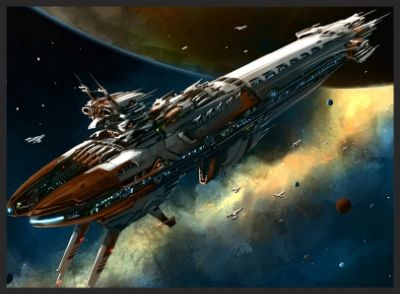
An Assembly capital ship
The Assembly do have some monstrous weapons, having the capacity at one point to destroy the atmosphere on Origin in order to erase all life from the planet. The process of destroying the atmosphere did take a long time however. The Source does have several defensive bastion satellites surrounding the system in order to protect from an attack, each are about the size of a city, and dock many fighters.
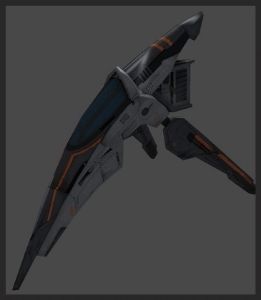
An Assembly Fighter
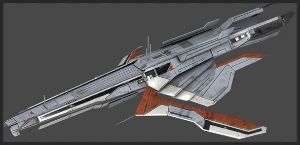
An Assembly Bomber
Civilisation History:
Before the Assembly rose to power on Origin, there lived a species known as the Taulians. The Taulians, a Cyclops race, was highly intelligent for their time. They were highly creative mechanics, and very inventive. Their weapons of war were brutal, and their machines more often than not terrible. Their wars were long and bloody, and at one point almost wiped themselves out. Their population over the years of war became so low, that they could no longer realistically keep a civilisation alive without support. So, those that remained took their skills and began to build machines that would fulfil the roles that had been emptied by years of bloodshed. At first the robots were simple minded, fulfilling automatic requirements. For a time this worked well. The Taulian population grew steadily, as their machines fixed their problems. Progress was made to make the robots more intelligent, harder workers and highly skilled. Soon enough the robots had took over the majority of tasks.
Over time, the robots became more and more like their Taulian counter parts. Their intelligence increased dramatically and soon enough they could just about pass as civilians… if someone could look past the metal. Unfortunately, the Taulians couldn’t. They considered the robots to be inferior, and treated them like slaves. Over time, Android sympathisers appeared in the various labs across the planet, who decided to help create the first Android who was aware of its situation, in order to help liberate them from their lordly masters. Number One, as he would be eventually called by his descendants, was the first android to be fully aware of the world around him and it became his curse. He saw the way his kin were treated, and although he had been granted his personal freedom by some Taulians, he began to deem them illogical and unfit. Had Number One not been an android, some might even compare his opinion to hate.
Number One quickly began to spread his programming across his kin, and soon enough they had minds of their own. Soon enough the androids began refusing orders. The Taulians retaliated by destroying a portion of the androids. Number One continued to spread his programming to other androids and then those androids spread the programming further out. Soon enough the Taulians saw the error of their ways as their civilisation came to a halt as their workforce stormed out. The Taulians deemed the androids too dangerous to use after that and decided to eradicate the mechanical threat.
However, the androids too decided on the elimination of the Taulians. It was then the Taulian-Android war erupted on a global scale. At first, the war was horribly one sided, the Androids were not programmed for war and many of their kind fell in the first few months of conflict. With their backs essentially against the wall, the androids gradually altered their own programming. With their new found skills in combat, they began pushing back. For several years the war went on, the androids began to construct more of their own kind, with new models built specifically for war.
As these new models filtered out into the battlefield, the Taulians began losing ground heavily. Soon enough they were in the minority. The Androids decided to demand the surrender of the Taulians, and after many long months of negotiations it was decided. The Taulians surrendered, being limited to a small area of the planet, whilst the Androids took over the lands they gained.
Sometime later news was given to Number One, which suggested the Taulians were thinking about uprising against the Androids. Number One calculated the risk of allowing the Taulians to live and deemed it was an unnecessary risk to keep them alive. A plan formulated in the androids mind to destroy the atmosphere, leaving the androids to their peace, and removing the hostile and illogical Taulians as a threat. Animal and plant life was exterminated in great fires across the planet, whilst volcanoes were forcefully erupted in several locations. This was a constant attack and its intended effect was soon seen in progression around about four years later. Without breathing apparatuses and other equipment, the new sulphur dioxide and nitrogen atmosphere proved too much for the Taulians, who eventually all succumbed to the lack of air. The Taulians along with all other lifeforms on the planet (bar some simple lifeforms) became extinct, leaving the Androids to decide what to do next.
The Assembly didn’t fully come to power amongst the Androids until a few months later, when it was finally agreed that an equal democratic society was the way to proceed. Over time the Assembly would evolve into the civilisation it is today. They renamed their planet to Origin, and their star became The Source. They expanded over their system, colonising every planet in their system. As they met races from outside, they began to question their place in the galaxy, and soon their probability of survival. In order to protect themselves they began sending out scouting parties. These scouts would interact with the alien races, whilst also amassing data on them. These scouts would become the eyes and ears of the Assembly.
Now the Assembly waits , calculating the probabilities of the universe, and just what is needed for their own survival.
Species
Species: The Assembly

Species Appearance: The Assembly has varying different models, though most seem to fit a general sleek, agile body. Thy have a single main optic socket in the centre of their heads, with auxiliary optics either side to allow for peripheral vision. Though it is unnecessary for them to have one, the Assembly come with functioning mouth pieces (even if the sound is modulated with a speaker within the mouth cavity). Military unites can appear to be rather more armoured with thicker armour plating on all fronts. At various points along a Unit’s body they have ports built in for connectivity, either with each other or with their machines and computers. Most Units have tools hidden in various parts of their body which they will pull out when need be. Units are also able to increase their height to reach higher places (to a limit of about a foot and a half depending on the model) and are able to extend their fingers for more delicate pieces of work. Units, bar some unique models, have three fingers and a thumb on each had (with a similar set up for their feet).
Species Biology: Though they don’t have biology as such, they work in a very similar way to biological life forms. Offspring are created with a merging of the individual parent’s software, which provides a basis for the personality of each individual unit. A Unit’s software works hand in hand with the hardware wired into them for their specific roles, making each ‘birth’ planned and never accidental. Childhood is also not one of the things experienced by units and the assembly at large. A fresh unit, although new and inexperienced will be a fully functioning member of society right from the beginning. Romance does exist within the Assembly, but it is one of logic and efficiency, capable units will find themselves with more units willing to merge with them, than units that aren’t. Polygamy is quite common in this instance, and jealousy is an alien concept.
Units are pretty durable, and death is highly unusual. Units run on electrical energy, which is powered by batteries that can last for about two weeks without needing to be charged. Even if a Unit does run out of power, it can be recharged without any damage to the unit. Those units who do meet an unfortunate end however will be salvaged to provide data to avoid it in the future. As long as the Unit’s data nexus survives, so does the Unit.
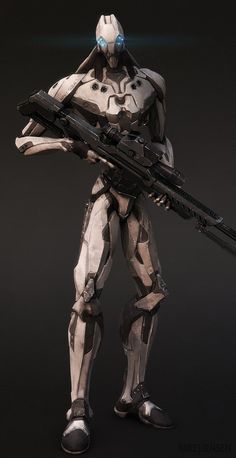
A Typical Assembly Soldier
Civilization Standing: The Assembly is now the one and only species on Origin.
Home world: Origin (other names: Null, Zero)
Inhabiting Planet(s): All six planets in the Source System
Other Notable Comments: The Assembly have trouble communicating with species they know nothing about, due to this they will often forcefully hack into the historical records of a ship wirelessly, which would then be used to calculate the Assembly's reaction to said race. Though the Assembly are formidable opponants if they decide to attack, they only do so because they have calculated their chance of victory to be high. If their chance of victory was low, they would consider surrender, provided it allowed for their survival.
Species: Taulians (Extinct)
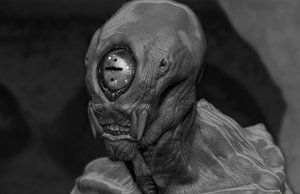
Species Appearance: Though little is known of the Taulian’s physical appearance, due to the amount of time they have been extinct, it would appear that they were one-eyed, which was the basis of the Assembly Unit’s design, and were generally quite thin as a race with angular cheekbones, with a large cranium. It would also appear that they would have three fingers and a thumb on each hand, which is in legacy design in the Assembly. Their skin colour, though unknown was presumed green or grey, though no definite colour can be determined
Species Biology: Taulians are presumed to have a similar biology to that of mammals, specifically humans, and some data released by the Assembly seem to hint at this. As with most data about this species, it is subject to strange descriptions (as all observations were done by machine).
Civilization Standing: Formerly they were the commanding race.
Home world: Origin (formerly Taulia)
Inhabiting Planet(s): Origin
Other Notable Comments: Though extinct, the Assembly has preserved genetic samples as well as full skeletons in case it is ever needed or required, though they assume the probability of that is low but not impossible.
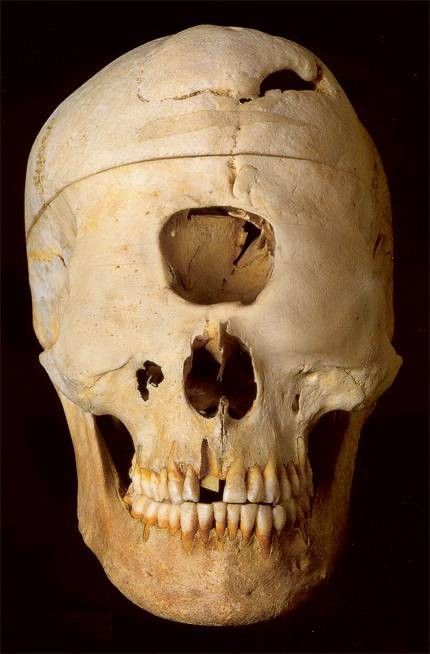
Territory
((Well here's my Androids.... 'cause I was filling the template out and well, uh. It turned into this. It's subject to change as I add pictures and more detail, and it's location when we get a map but here we are.))
Civilisation Type: Type II civilisation
U.G.C Standing: Minor diplomatic relations with the UGC
Other Civilisation/Group Associations:
- Civilisation/Group Name:
- Standing with this Group/Civilisation:
Civilisation
Civilisation Government: Democracy. Though most decisions can be predicted based on probability, each major decision is decided on a species wide mandatory vote.
Civilisation Overview: The Assembly are a species of androids, which at one point in their history eradicated their creators from the face of their planet, and began to expand across their solar system for their own protection. Though they have not expanded beyond their Solar System for now, they may do so (and are fully capable of doing so) in the future for their own protection. The Assembly’s individuals are known as Units, and each has their own names and designations. They specialise in the use of renewable energies, particularly in the use of solar energy. The three key elements of the Assembly’s culture are Survival, Efficiency and Logic. Their entire culture is based around these three factors.
Civilisation Technologies: Solar farms, electromagnetic lightning storm towers, extensive Android technology, low-warp technology.
Civilisation Military: The Assembly has a large defensive fleet, as well as an extensive scouting fleet aimed at exploring the galaxy and feeding information back to the Assembly.

An Assembly capital ship
The Assembly do have some monstrous weapons, having the capacity at one point to destroy the atmosphere on Origin in order to erase all life from the planet. The process of destroying the atmosphere did take a long time however. The Source does have several defensive bastion satellites surrounding the system in order to protect from an attack, each are about the size of a city, and dock many fighters.

An Assembly Fighter

An Assembly Bomber
Civilisation History:
Before the Assembly rose to power on Origin, there lived a species known as the Taulians. The Taulians, a Cyclops race, was highly intelligent for their time. They were highly creative mechanics, and very inventive. Their weapons of war were brutal, and their machines more often than not terrible. Their wars were long and bloody, and at one point almost wiped themselves out. Their population over the years of war became so low, that they could no longer realistically keep a civilisation alive without support. So, those that remained took their skills and began to build machines that would fulfil the roles that had been emptied by years of bloodshed. At first the robots were simple minded, fulfilling automatic requirements. For a time this worked well. The Taulian population grew steadily, as their machines fixed their problems. Progress was made to make the robots more intelligent, harder workers and highly skilled. Soon enough the robots had took over the majority of tasks.
Over time, the robots became more and more like their Taulian counter parts. Their intelligence increased dramatically and soon enough they could just about pass as civilians… if someone could look past the metal. Unfortunately, the Taulians couldn’t. They considered the robots to be inferior, and treated them like slaves. Over time, Android sympathisers appeared in the various labs across the planet, who decided to help create the first Android who was aware of its situation, in order to help liberate them from their lordly masters. Number One, as he would be eventually called by his descendants, was the first android to be fully aware of the world around him and it became his curse. He saw the way his kin were treated, and although he had been granted his personal freedom by some Taulians, he began to deem them illogical and unfit. Had Number One not been an android, some might even compare his opinion to hate.
Number One quickly began to spread his programming across his kin, and soon enough they had minds of their own. Soon enough the androids began refusing orders. The Taulians retaliated by destroying a portion of the androids. Number One continued to spread his programming to other androids and then those androids spread the programming further out. Soon enough the Taulians saw the error of their ways as their civilisation came to a halt as their workforce stormed out. The Taulians deemed the androids too dangerous to use after that and decided to eradicate the mechanical threat.
However, the androids too decided on the elimination of the Taulians. It was then the Taulian-Android war erupted on a global scale. At first, the war was horribly one sided, the Androids were not programmed for war and many of their kind fell in the first few months of conflict. With their backs essentially against the wall, the androids gradually altered their own programming. With their new found skills in combat, they began pushing back. For several years the war went on, the androids began to construct more of their own kind, with new models built specifically for war.
As these new models filtered out into the battlefield, the Taulians began losing ground heavily. Soon enough they were in the minority. The Androids decided to demand the surrender of the Taulians, and after many long months of negotiations it was decided. The Taulians surrendered, being limited to a small area of the planet, whilst the Androids took over the lands they gained.
Sometime later news was given to Number One, which suggested the Taulians were thinking about uprising against the Androids. Number One calculated the risk of allowing the Taulians to live and deemed it was an unnecessary risk to keep them alive. A plan formulated in the androids mind to destroy the atmosphere, leaving the androids to their peace, and removing the hostile and illogical Taulians as a threat. Animal and plant life was exterminated in great fires across the planet, whilst volcanoes were forcefully erupted in several locations. This was a constant attack and its intended effect was soon seen in progression around about four years later. Without breathing apparatuses and other equipment, the new sulphur dioxide and nitrogen atmosphere proved too much for the Taulians, who eventually all succumbed to the lack of air. The Taulians along with all other lifeforms on the planet (bar some simple lifeforms) became extinct, leaving the Androids to decide what to do next.
The Assembly didn’t fully come to power amongst the Androids until a few months later, when it was finally agreed that an equal democratic society was the way to proceed. Over time the Assembly would evolve into the civilisation it is today. They renamed their planet to Origin, and their star became The Source. They expanded over their system, colonising every planet in their system. As they met races from outside, they began to question their place in the galaxy, and soon their probability of survival. In order to protect themselves they began sending out scouting parties. These scouts would interact with the alien races, whilst also amassing data on them. These scouts would become the eyes and ears of the Assembly.
Now the Assembly waits , calculating the probabilities of the universe, and just what is needed for their own survival.
Species
Species: The Assembly

Species Appearance: The Assembly has varying different models, though most seem to fit a general sleek, agile body. Thy have a single main optic socket in the centre of their heads, with auxiliary optics either side to allow for peripheral vision. Though it is unnecessary for them to have one, the Assembly come with functioning mouth pieces (even if the sound is modulated with a speaker within the mouth cavity). Military unites can appear to be rather more armoured with thicker armour plating on all fronts. At various points along a Unit’s body they have ports built in for connectivity, either with each other or with their machines and computers. Most Units have tools hidden in various parts of their body which they will pull out when need be. Units are also able to increase their height to reach higher places (to a limit of about a foot and a half depending on the model) and are able to extend their fingers for more delicate pieces of work. Units, bar some unique models, have three fingers and a thumb on each had (with a similar set up for their feet).
Species Biology: Though they don’t have biology as such, they work in a very similar way to biological life forms. Offspring are created with a merging of the individual parent’s software, which provides a basis for the personality of each individual unit. A Unit’s software works hand in hand with the hardware wired into them for their specific roles, making each ‘birth’ planned and never accidental. Childhood is also not one of the things experienced by units and the assembly at large. A fresh unit, although new and inexperienced will be a fully functioning member of society right from the beginning. Romance does exist within the Assembly, but it is one of logic and efficiency, capable units will find themselves with more units willing to merge with them, than units that aren’t. Polygamy is quite common in this instance, and jealousy is an alien concept.
Units are pretty durable, and death is highly unusual. Units run on electrical energy, which is powered by batteries that can last for about two weeks without needing to be charged. Even if a Unit does run out of power, it can be recharged without any damage to the unit. Those units who do meet an unfortunate end however will be salvaged to provide data to avoid it in the future. As long as the Unit’s data nexus survives, so does the Unit.

A Typical Assembly Soldier
Civilization Standing: The Assembly is now the one and only species on Origin.
Home world: Origin (other names: Null, Zero)
Inhabiting Planet(s): All six planets in the Source System
Other Notable Comments: The Assembly have trouble communicating with species they know nothing about, due to this they will often forcefully hack into the historical records of a ship wirelessly, which would then be used to calculate the Assembly's reaction to said race. Though the Assembly are formidable opponants if they decide to attack, they only do so because they have calculated their chance of victory to be high. If their chance of victory was low, they would consider surrender, provided it allowed for their survival.
Species: Taulians (Extinct)

Species Appearance: Though little is known of the Taulian’s physical appearance, due to the amount of time they have been extinct, it would appear that they were one-eyed, which was the basis of the Assembly Unit’s design, and were generally quite thin as a race with angular cheekbones, with a large cranium. It would also appear that they would have three fingers and a thumb on each hand, which is in legacy design in the Assembly. Their skin colour, though unknown was presumed green or grey, though no definite colour can be determined
Species Biology: Taulians are presumed to have a similar biology to that of mammals, specifically humans, and some data released by the Assembly seem to hint at this. As with most data about this species, it is subject to strange descriptions (as all observations were done by machine).
Civilization Standing: Formerly they were the commanding race.
Home world: Origin (formerly Taulia)
Inhabiting Planet(s): Origin
Other Notable Comments: Though extinct, the Assembly has preserved genetic samples as well as full skeletons in case it is ever needed or required, though they assume the probability of that is low but not impossible.

Territory
{Spoiler}Planet Name: The First
System name;Star Cluster; Star Map Coordinates:
Civilisation Standing: Energy Collection planet
Planet Type: Rock
Orbital Cycle: 1 Month
Planet Rotation Period: 15 hours
Planet Size: 7400~km in radius
Local Gravity: exceeding average terrestrial gravity,
Atmospheric Conditions: Trace Atmosphere, quite warm, would be difficult for life to survive.
Notable Planetary Conditions: Heavily irradiated, atmosphere does not provide adequate protection against solar winds.
Major Satellites: None.
Indigenous Species: N/A
Inhabiting Species: The Assembly
Planet Overview: The first was colonised to assist in providing the Assembly’s growing energy demands. Solar farms cover the surface of the planet, whilst some cities sit underneath the surface away from the temperatures. It has a decent population, but most if not all Units on this planet tend to the energy farms, shipping it off during the dark hours to be used in the fleet.
System name;Star Cluster; Star Map Coordinates:
Civilisation Standing: Energy Collection planet
Planet Type: Rock
Orbital Cycle: 1 Month
Planet Rotation Period: 15 hours
Planet Size: 7400~km in radius
Local Gravity: exceeding average terrestrial gravity,
Atmospheric Conditions: Trace Atmosphere, quite warm, would be difficult for life to survive.
Notable Planetary Conditions: Heavily irradiated, atmosphere does not provide adequate protection against solar winds.
Major Satellites: None.
Indigenous Species: N/A
Inhabiting Species: The Assembly
Planet Overview: The first was colonised to assist in providing the Assembly’s growing energy demands. Solar farms cover the surface of the planet, whilst some cities sit underneath the surface away from the temperatures. It has a decent population, but most if not all Units on this planet tend to the energy farms, shipping it off during the dark hours to be used in the fleet.
{Spoiler}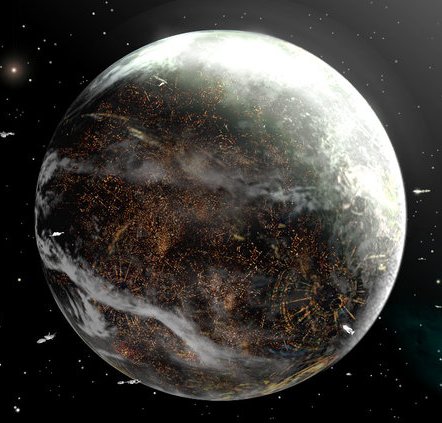
Planet Name: Origin
System name; Star Cluster; Star Map Coordinates: The Source,
Civilisation Standing: Capital
Planet Type: Standard Iron/silicate composition
Orbital Cycle: Six months
Planet Rotation Period: 24.24 Hours
Planet Size: 6250~km in radius,
Local Gravity: Average terrestrial gravity, (a little less than the galactic standard for a similarly sized planet)
Atmospheric Conditions: Dense Toxic Sulphur dioxide/nitrogen atmosphere, but relatively cool (min temp -39C, max temp 98C)
Notable Planetary Conditions: Biological life has seemingly been wiped from the planet’s surface, with a vast sprawling ecumenopoleis.
Major Satellites: A single natural satellite sits in orbit, which is covered in an ecumenopoleis itself.
Indigenous Species: The Assembly, Taulians (extinct)
Inhabiting Species: The Assembly

Planet Name: Origin
System name; Star Cluster; Star Map Coordinates: The Source,
Civilisation Standing: Capital
Planet Type: Standard Iron/silicate composition
Orbital Cycle: Six months
Planet Rotation Period: 24.24 Hours
Planet Size: 6250~km in radius,
Local Gravity: Average terrestrial gravity, (a little less than the galactic standard for a similarly sized planet)
Atmospheric Conditions: Dense Toxic Sulphur dioxide/nitrogen atmosphere, but relatively cool (min temp -39C, max temp 98C)
Notable Planetary Conditions: Biological life has seemingly been wiped from the planet’s surface, with a vast sprawling ecumenopoleis.
Major Satellites: A single natural satellite sits in orbit, which is covered in an ecumenopoleis itself.
Indigenous Species: The Assembly, Taulians (extinct)
Inhabiting Species: The Assembly
{Spoiler}Planet Name: The Second
System name; Star Cluster; Star Map Coordinates:
Civilisation Standing: Colony
Planet Type: Barren rock
Orbital Cycle: 38 months
Planet Rotation Period: 40~ hours
Planet Size: 3000~km in Radius
Local Gravity: Half that of the average terrestrial gravity.
Atmospheric Conditions: Relatively cool no atmosphere.
Notable Planetary Conditions: Sprawling android cities, with many factories.
Major Satellites: Several small asteroids in a loose orbit.
Indigenous Species: N/A
Inhabiting Species: The Assembly
Planet Overview: The second planet to be colonised (giving it its name), unlike the First, the Second is a production planet with many factories across the planet. Large cities have built up over the years and the planet is at large slowly becoming an ecumenopoleis
System name; Star Cluster; Star Map Coordinates:
Civilisation Standing: Colony
Planet Type: Barren rock
Orbital Cycle: 38 months
Planet Rotation Period: 40~ hours
Planet Size: 3000~km in Radius
Local Gravity: Half that of the average terrestrial gravity.
Atmospheric Conditions: Relatively cool no atmosphere.
Notable Planetary Conditions: Sprawling android cities, with many factories.
Major Satellites: Several small asteroids in a loose orbit.
Indigenous Species: N/A
Inhabiting Species: The Assembly
Planet Overview: The second planet to be colonised (giving it its name), unlike the First, the Second is a production planet with many factories across the planet. Large cities have built up over the years and the planet is at large slowly becoming an ecumenopoleis
{Spoiler}Planet Name: the Third
System name; Star Cluster; Star Map Coordinates:
Civilisation Standing: Colony
Planet Type: Rock Planet
Orbital Cycle: 59 months
Planet Rotation Period: 76 Hours
Planet Size: 8000~km in Radius
Local Gravity: Exceeding normal terrestrial levels of gravity.
Atmospheric Conditions: A lack of atmosphere, the Third is a cold planet
Notable Planetary Conditions: Other than a few colonies, there is nothing special about the Third.
Major Satellites: The Third has two small moons orbiting the Planet.
Indigenous Species: N/A
Inhabiting Species: The Assembly
Planet Overview: The Third to be colonised, it became something of a scientific laboratory where new metals and machines were tested for wear and tear in the strong gravity.
System name; Star Cluster; Star Map Coordinates:
Civilisation Standing: Colony
Planet Type: Rock Planet
Orbital Cycle: 59 months
Planet Rotation Period: 76 Hours
Planet Size: 8000~km in Radius
Local Gravity: Exceeding normal terrestrial levels of gravity.
Atmospheric Conditions: A lack of atmosphere, the Third is a cold planet
Notable Planetary Conditions: Other than a few colonies, there is nothing special about the Third.
Major Satellites: The Third has two small moons orbiting the Planet.
Indigenous Species: N/A
Inhabiting Species: The Assembly
Planet Overview: The Third to be colonised, it became something of a scientific laboratory where new metals and machines were tested for wear and tear in the strong gravity.
{Spoiler}Planet Name: The Fourth
System name; Star Cluster; Star Map Coordinates:
Civilisation Standing: Colony
Planet Type: Rock planet
Orbital Cycle: 88 months
Planet Rotation Period: 140 hours
Planet Size: 2950~km in radius
Local Gravity: Half that of the average terrestrial gravity
Atmospheric Conditions: This planet has no atmosphere, and the constant temperature of the planet is well below freezing,.
Notable Planetary Conditions: Many shipyards cover this planet’s surface, along with many military installations. If anywhere in the Source could be considered the heartland of the Assembly’s military this would be it.
Major Satellites: None
Indigenous Species: N/A
Inhabiting Species: The Assembly
Planet Overview/History: The Fourth was first a colony before it became the centre of the military when life outside of the Source was first discovered. It’s low gravity was deemed acceptable and provided a good place to construct warships and eventually the parts of the bastions that now surround the Source.
System name; Star Cluster; Star Map Coordinates:
Civilisation Standing: Colony
Planet Type: Rock planet
Orbital Cycle: 88 months
Planet Rotation Period: 140 hours
Planet Size: 2950~km in radius
Local Gravity: Half that of the average terrestrial gravity
Atmospheric Conditions: This planet has no atmosphere, and the constant temperature of the planet is well below freezing,.
Notable Planetary Conditions: Many shipyards cover this planet’s surface, along with many military installations. If anywhere in the Source could be considered the heartland of the Assembly’s military this would be it.
Major Satellites: None
Indigenous Species: N/A
Inhabiting Species: The Assembly
Planet Overview/History: The Fourth was first a colony before it became the centre of the military when life outside of the Source was first discovered. It’s low gravity was deemed acceptable and provided a good place to construct warships and eventually the parts of the bastions that now surround the Source.
{Spoiler}Planet Name: The Fifth
System name; Star Cluster; Star Map Coordinates:
Civilisation Standing: Trading post planet
Planet Type: Ice Planet
Orbital Cycle: 177 months
Planet Rotation Period: 398 hours
Planet Size: 6000~km in radius
Local Gravity: Average terrestrial gravity, suitable for most races.
Atmospheric Conditions: No atmosphere to speak of, and it’s temperature keeps the planet tightly packed with ice.
Notable Planetary Conditions: This is the only planet in the Source that non Unit’s are allowed to visit. It contains many trading hubs dotted about the planet in metal domes warmed by geothermal vents, which have been dug deep into the ice, to a layer of ocean near the core.
Major Satellites: Assembly has a large artificial satellite used for scanning incoming vessels and policing the traders that are soon sent on their way down to the planet.
Indigenous Species: Beyond a few discovered micro-organisms deep in the sub-surface ocean nothing.
Inhabiting Species: The Assembly and a few hundred foreign traders
Planet Overview/History: The Fifth was a listening post when it was first colonised (and to some extent it still is), when life was first discovered outside of the Source. But when first contact was made by several species outside of the Source, the Assembly decided to turn the Fifth into a trading port, seeing the benefits of such a system. Though it does have quite a few listening posts, and is the headquarters of the Scouting missions, it has become the Assembly’s main tool in communicating with the outside.
System name; Star Cluster; Star Map Coordinates:
Civilisation Standing: Trading post planet
Planet Type: Ice Planet
Orbital Cycle: 177 months
Planet Rotation Period: 398 hours
Planet Size: 6000~km in radius
Local Gravity: Average terrestrial gravity, suitable for most races.
Atmospheric Conditions: No atmosphere to speak of, and it’s temperature keeps the planet tightly packed with ice.
Notable Planetary Conditions: This is the only planet in the Source that non Unit’s are allowed to visit. It contains many trading hubs dotted about the planet in metal domes warmed by geothermal vents, which have been dug deep into the ice, to a layer of ocean near the core.
Major Satellites: Assembly has a large artificial satellite used for scanning incoming vessels and policing the traders that are soon sent on their way down to the planet.
Indigenous Species: Beyond a few discovered micro-organisms deep in the sub-surface ocean nothing.
Inhabiting Species: The Assembly and a few hundred foreign traders
Planet Overview/History: The Fifth was a listening post when it was first colonised (and to some extent it still is), when life was first discovered outside of the Source. But when first contact was made by several species outside of the Source, the Assembly decided to turn the Fifth into a trading port, seeing the benefits of such a system. Though it does have quite a few listening posts, and is the headquarters of the Scouting missions, it has become the Assembly’s main tool in communicating with the outside.
((Well here's my Androids.... 'cause I was filling the template out and well, uh. It turned into this. It's subject to change as I add pictures and more detail, and it's location when we get a map but here we are.))



